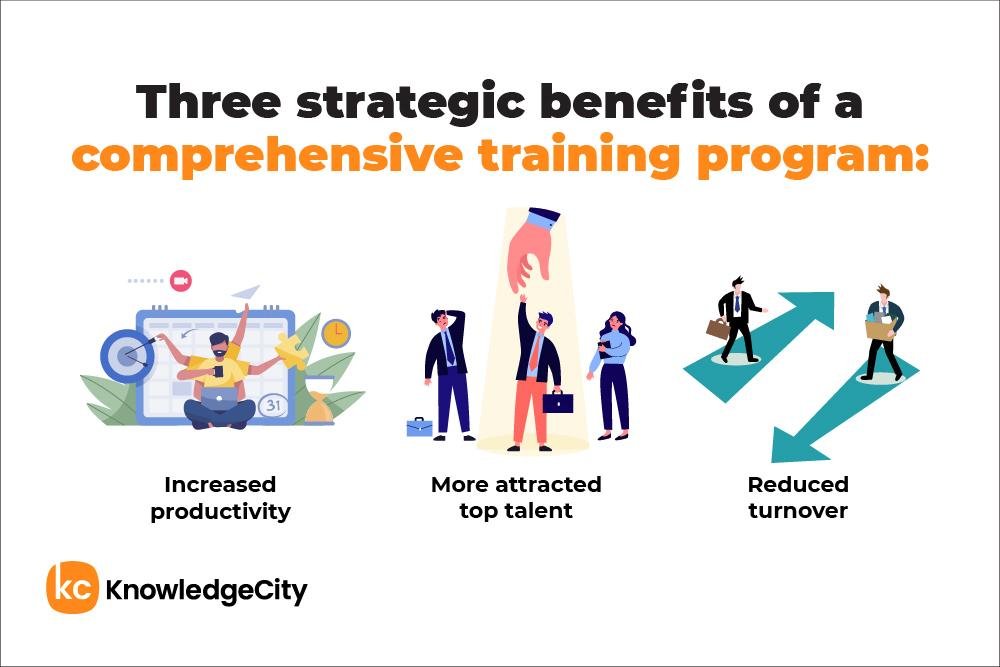Training programs are essential to building a skilled and motivated workforce, driving professional growth, and ensuring that employees or students meet industry standards. Crafting a successful training program requires understanding objectives, engaging learners, and continuously improving content and delivery methods. In this guide, we’ll explore the steps to create impactful training programs that yield long-term success.
Introduction to Effective Training Program
A successful training program is more than just a series of lectures or workshops; it’s a structured plan that equips participants with knowledge and skills tailored to their roles. Effective training programs are rooted in specific goals, are engaging, and adapt to the changing needs of both the industry and learners. By focusing on creating value and building core skills, training initiatives become a tool for driving personal and organizational growth.
Defining Training Objectives
The foundation of any successful training program lies in its objectives. Clear and measurable objectives provide direction and set the tone for the entire program. These objectives answer the fundamental question: “What should the participants be able to do or know by the end of this program?” Examples of objectives could range from mastering a specific skill, understanding a new process, or complying with industry standards. Well-defined goals ensure that the training remains focused and that the learning outcomes are assessable.
Key Skills for Trainers
The role of a trainer is critical in any training program. A skilled trainer not only knows the subject matter well but also understands how to effectively communicate it to a diverse audience. Key skills for trainers include:
- Effective Communication – Trainers need to convey complex information in a clear, engaging way.
- Adaptability – Trainers should be able to adjust their approach based on participant needs and feedback.
- Empathy – Understanding the learner’s perspective helps trainers create a supportive and inclusive environment.
- Continuous Learning – Trainers must stay updated on industry trends and new training methodologies.
Investing in the development of these skills among trainers can greatly enhance the quality and success of a training program.
Designing Engaging Training Material
Training materials should be engaging, accessible, and relevant to the audience’s experience level. Instead of lengthy text, use multimedia elements such as images, videos, and interactive elements that appeal to various learning styles. Gamification, quizzes, and practical exercises help to break up content and make learning enjoyable. Materials should be straightforward, as complex jargon can overwhelm participants. The goal is to keep learners interested and focused, reinforcing core concepts in memorable ways.
Incorporating Technology in Training Program
Technology has revolutionized training by introducing virtual learning environments, digital assessments, and real-time feedback mechanisms. Incorporating technology into training programs makes content more accessible and allows for flexible delivery options like online modules, recorded sessions, and live webinars. Tools like learning management systems (LMS) provide an organized way to deliver content and track progress. Technology also allows trainers to use simulations, augmented reality (AR), and virtual reality (VR), providing immersive experiences that boost learner engagement.
Customizing Training to Different Learner Needs
Every learner has unique preferences, strengths, and needs, and a one-size-fits-all approach to training may not be effective. Customizing training programs means accommodating different learning styles, backgrounds, and paces. For example:
- Visual Learners benefit from charts, diagrams, and videos.
- Auditory Learners excel with lectures, discussions, and recorded sessions.
- Kinesthetic Learners need hands-on practice and real-life simulations.
To achieve maximum impact, trainers should incorporate a mix of materials and teaching methods to cater to these differences, ensuring that all participants feel engaged and supported.
Evaluating Training Success
Assessing the effectiveness of a training program is essential to understanding its impact and identifying areas for improvement. Evaluation can be done through several methods:
- Feedback Surveys – Collect participant feedback on content relevance, trainer effectiveness, and overall satisfaction.
- Quizzes and Tests – Assess knowledge retention and understanding of the material.
- On-the-Job Performance – Observe if there’s an improvement in skills or knowledge application in real-world settings.
Using these evaluations helps trainers understand what worked, what didn’t, and how future sessions can be optimized for better outcomes.
Ensuring Consistency with RTO Compliance
Registered Training Organizations (RTOs) play a vital role in providing quality training that aligns with industry standards. Compliance with RTO guidelines is essential to ensure that programs meet national standards and provide credible, recognized outcomes for participants. RTO compliance involves adhering to a strict framework for quality, assessment standards, and program delivery, which requires regular auditing and documentation. Consistency with RTO compliance ensures that training programs not only meet regulatory standards but also maintain a reputation for excellence and reliability.
Handling Challenges in Training Programs
Training programs often face challenges, from engaging participants to ensuring practical application of knowledge. Trainers may encounter logistical issues, such as scheduling conflicts, budget constraints, or technology-related problems. Other challenges include managing participants with different learning speeds or handling low engagement. To address these issues, trainers should be proactive in their planning, build in flexibility, and consider feedback to continually adapt their approach. Developing problem-solving strategies and fostering open communication with participants can also help trainers overcome challenges more effectively.
Conclusion and Future Improvements
A well-structured training program brings significant benefits to both organizations and participants. By defining clear objectives, creating engaging materials, incorporating technology, and personalizing the learning experience, trainers can create impactful programs that lead to real improvements in skills and knowledge. Evaluating each program’s success and maintaining compliance with RTO standards ensures quality and growth. As industry demands evolve, continuous improvements and adaptations will be key to the ongoing success of training initiatives.






More Stories
Elevate Your Bathroom with Brass Bathroom Accessories
A Comprehensive Guide to Gate Installation
Choosing Quality Aluminum Windows for Homes